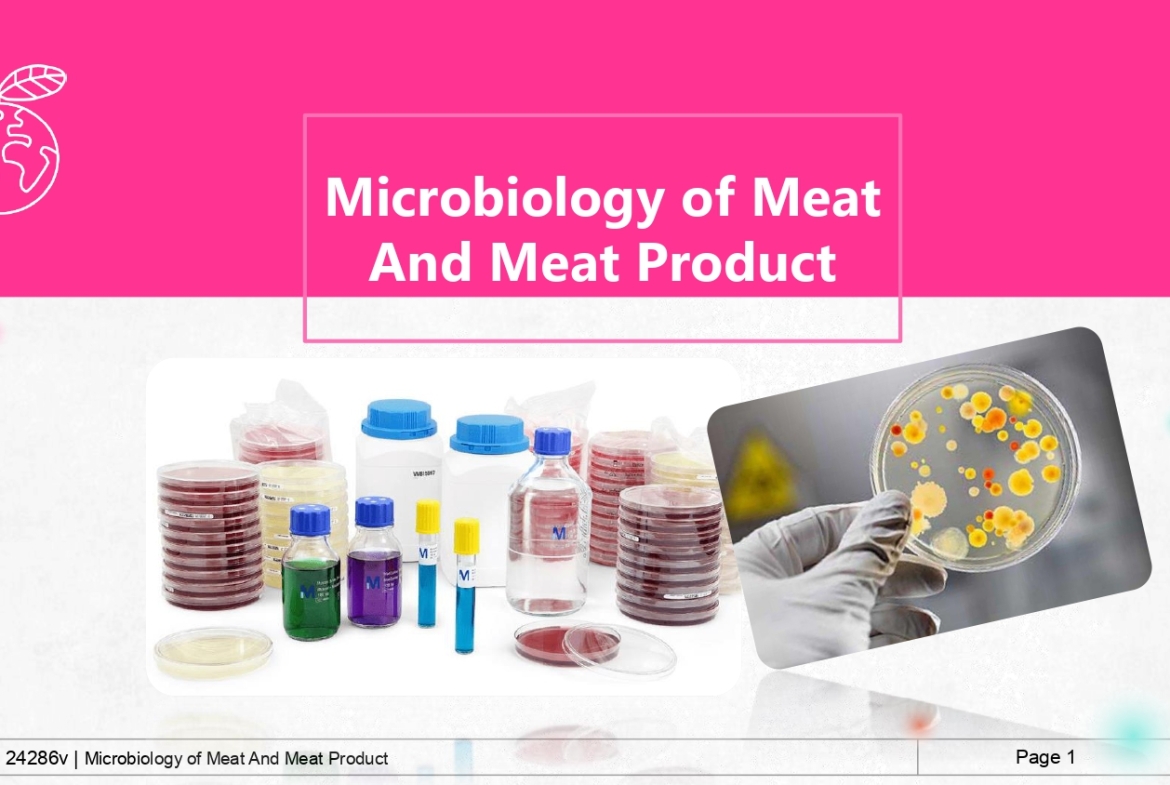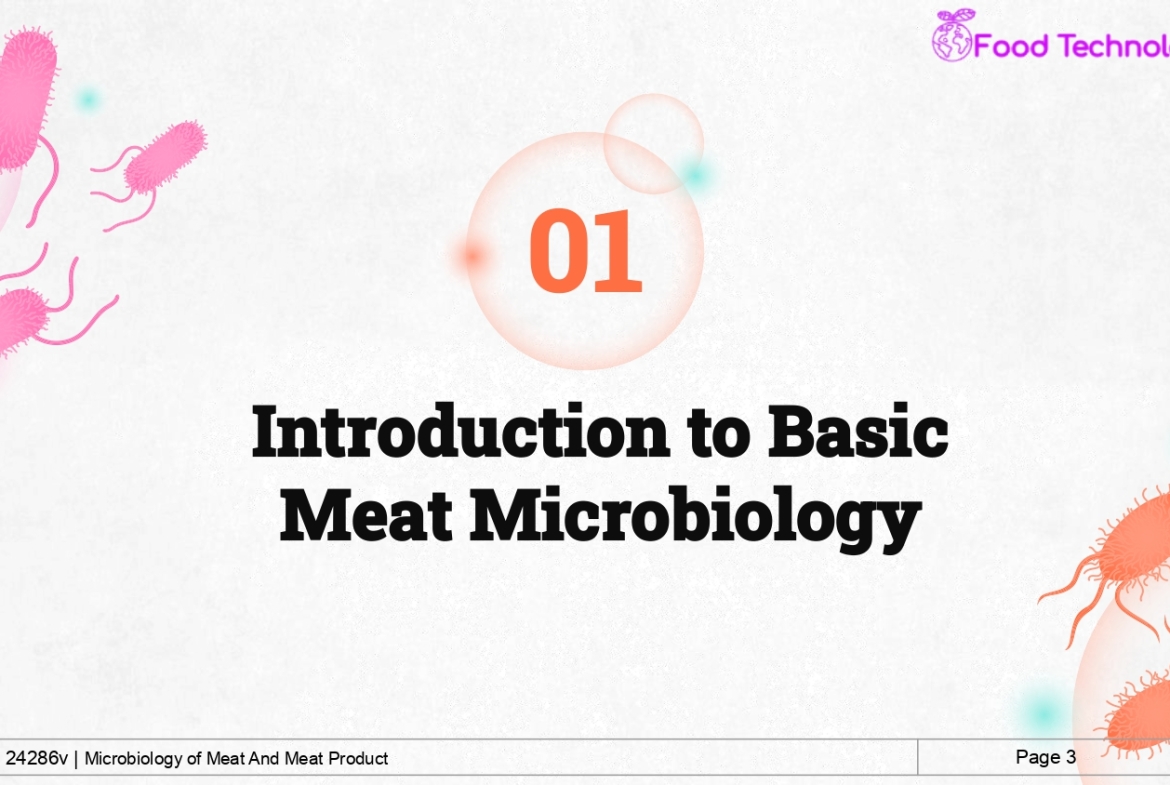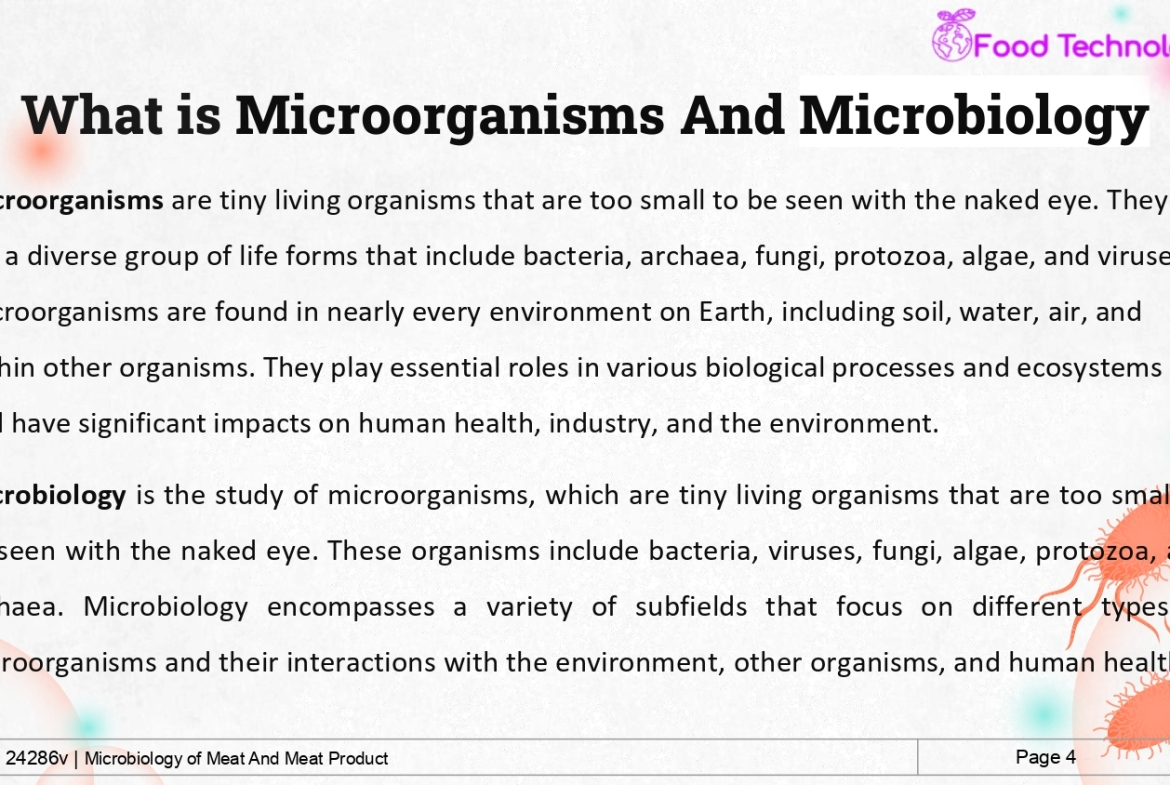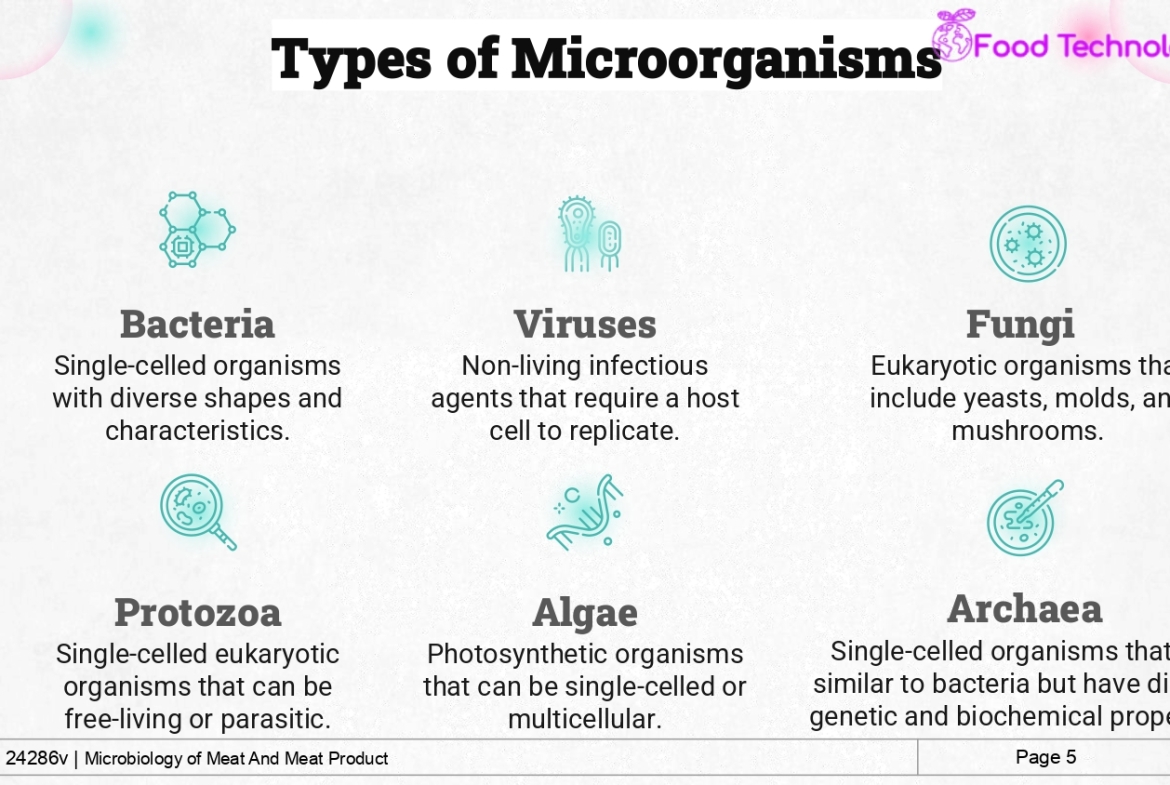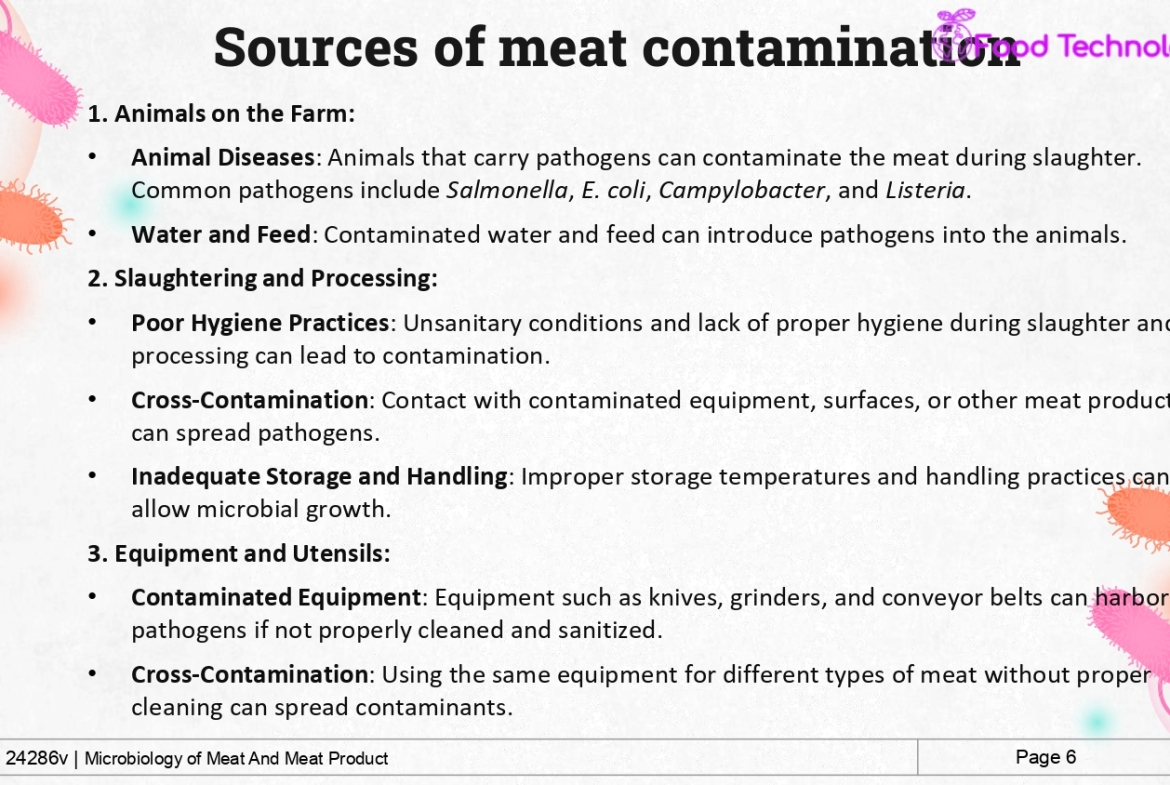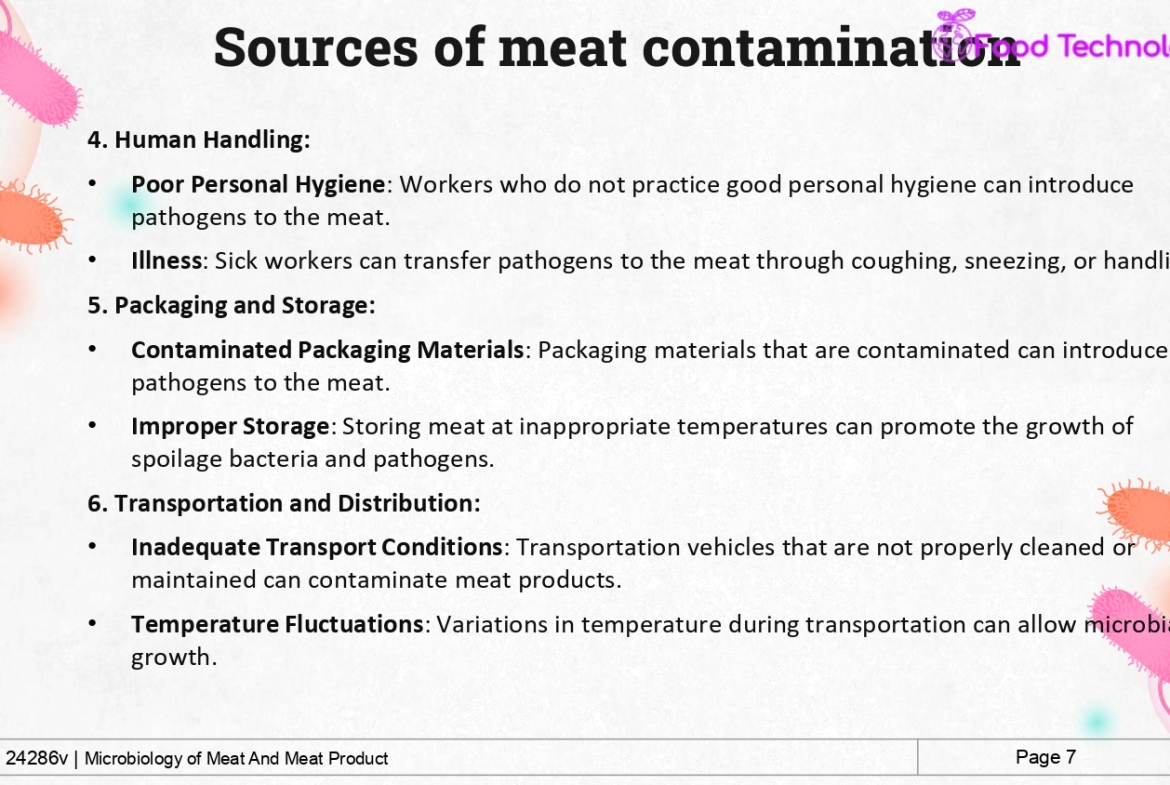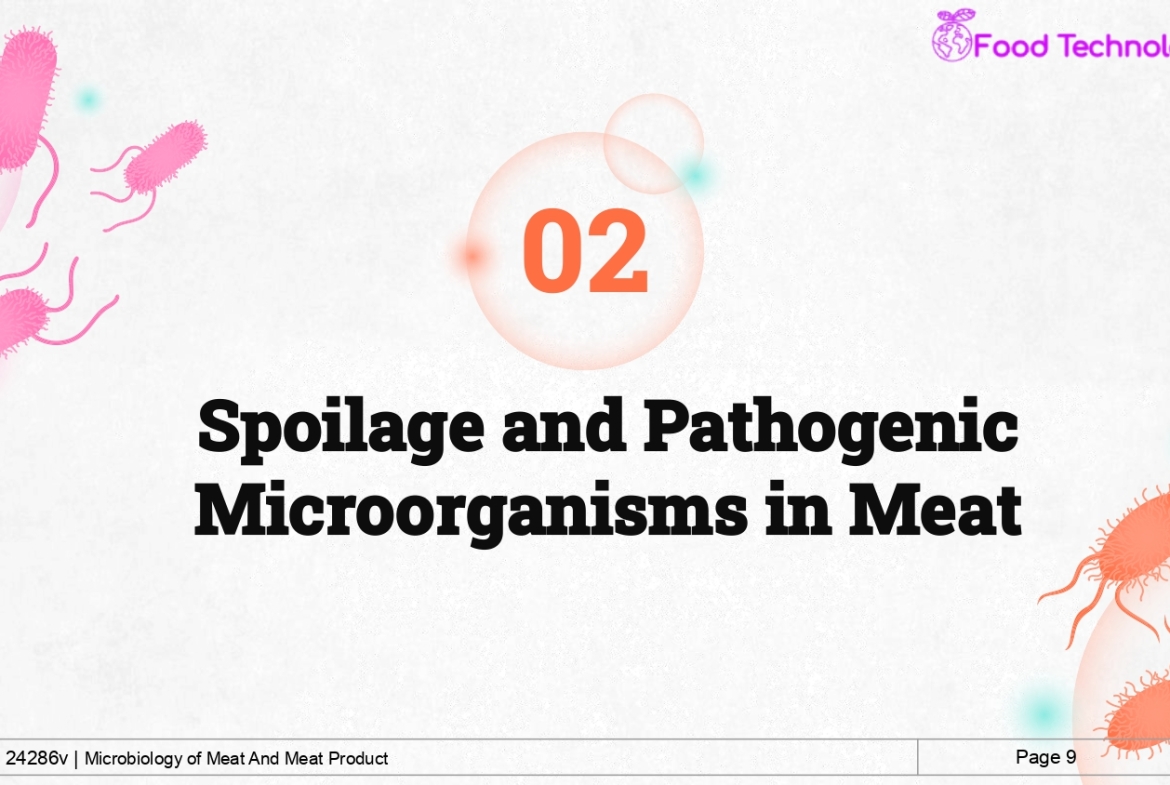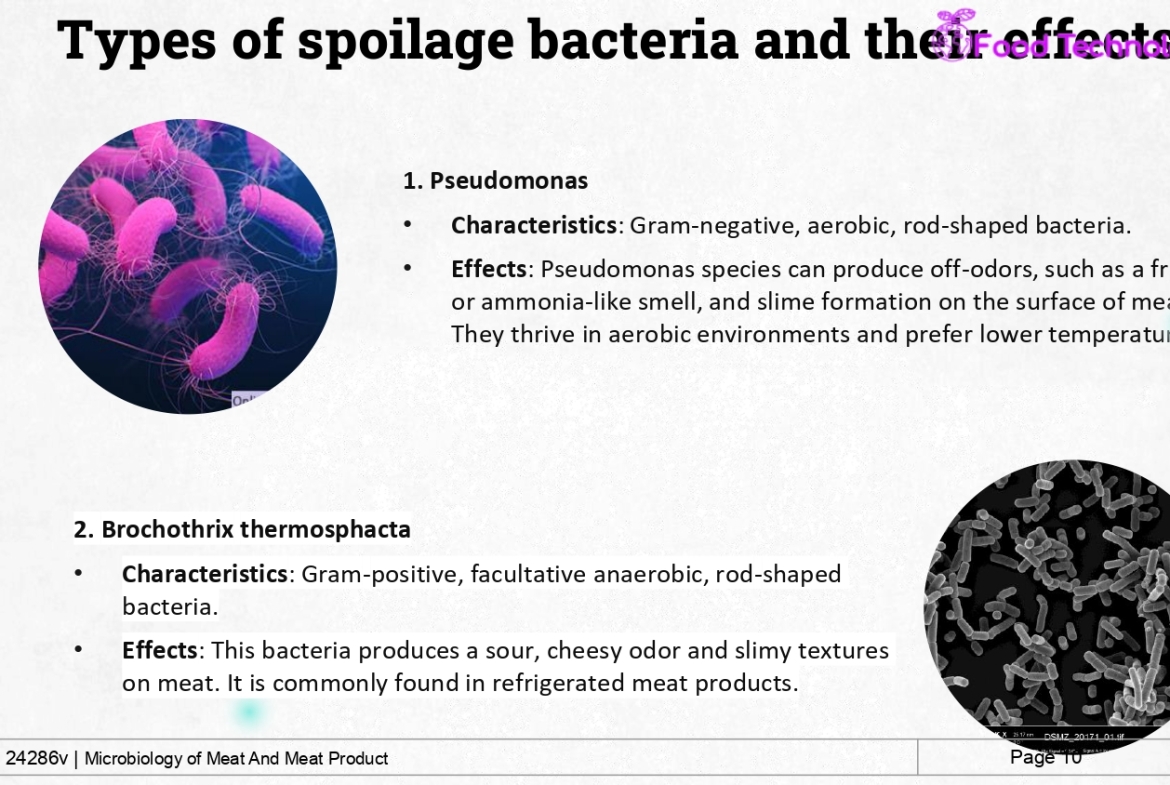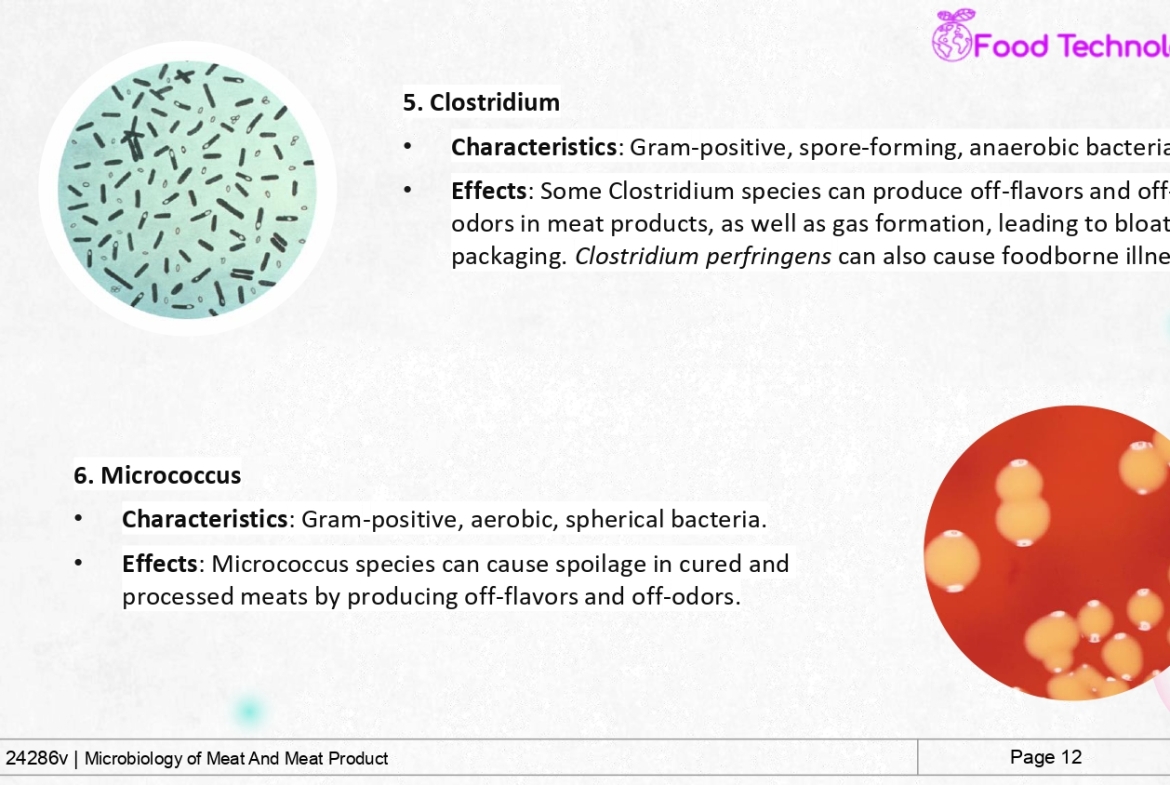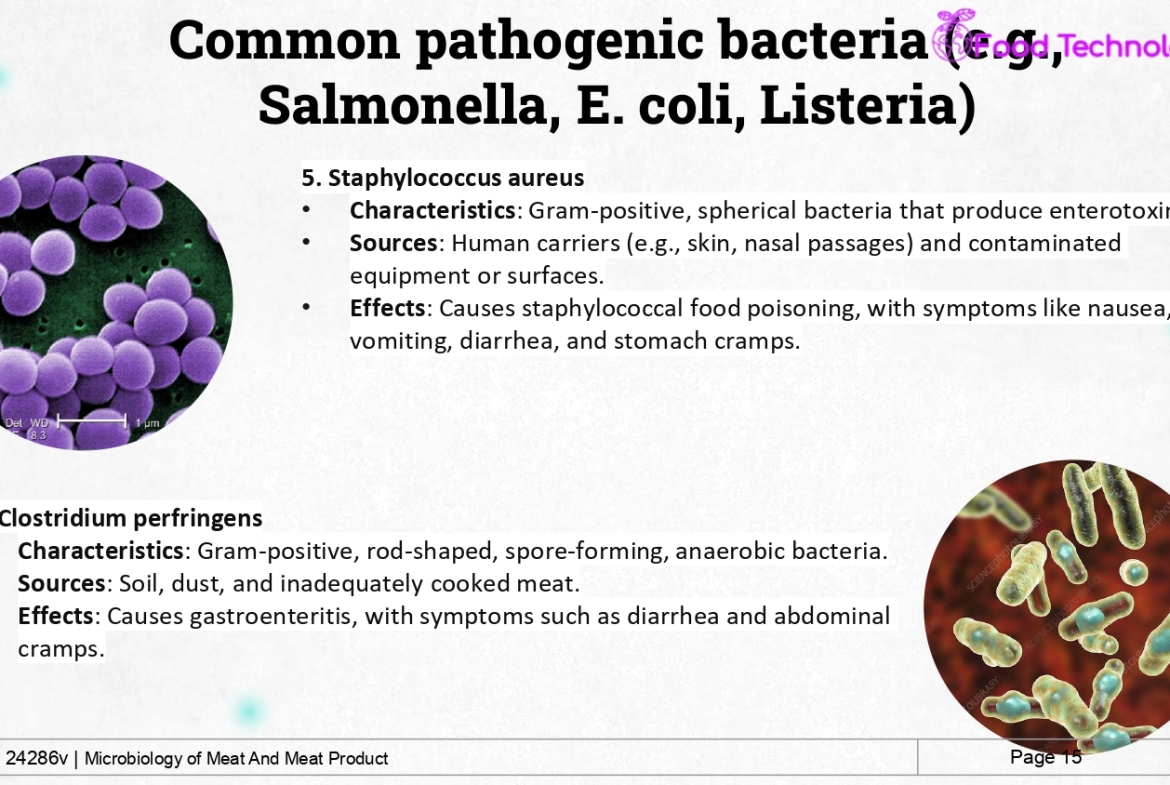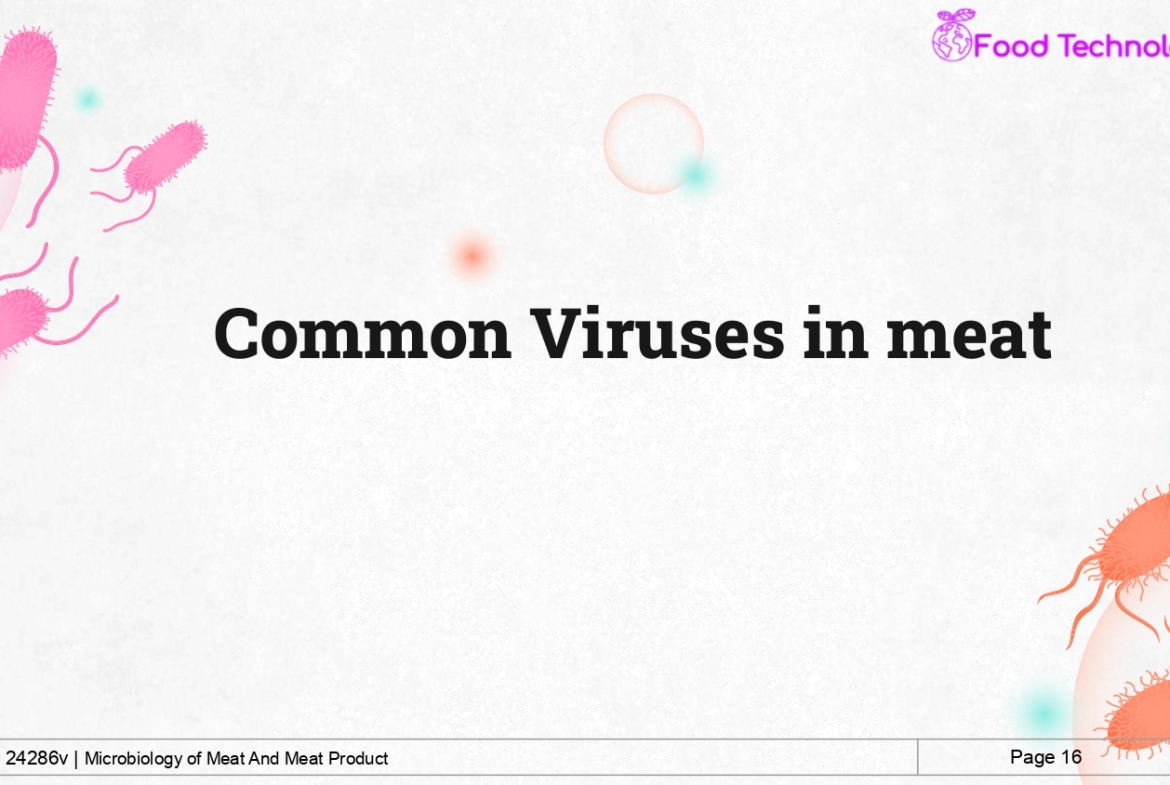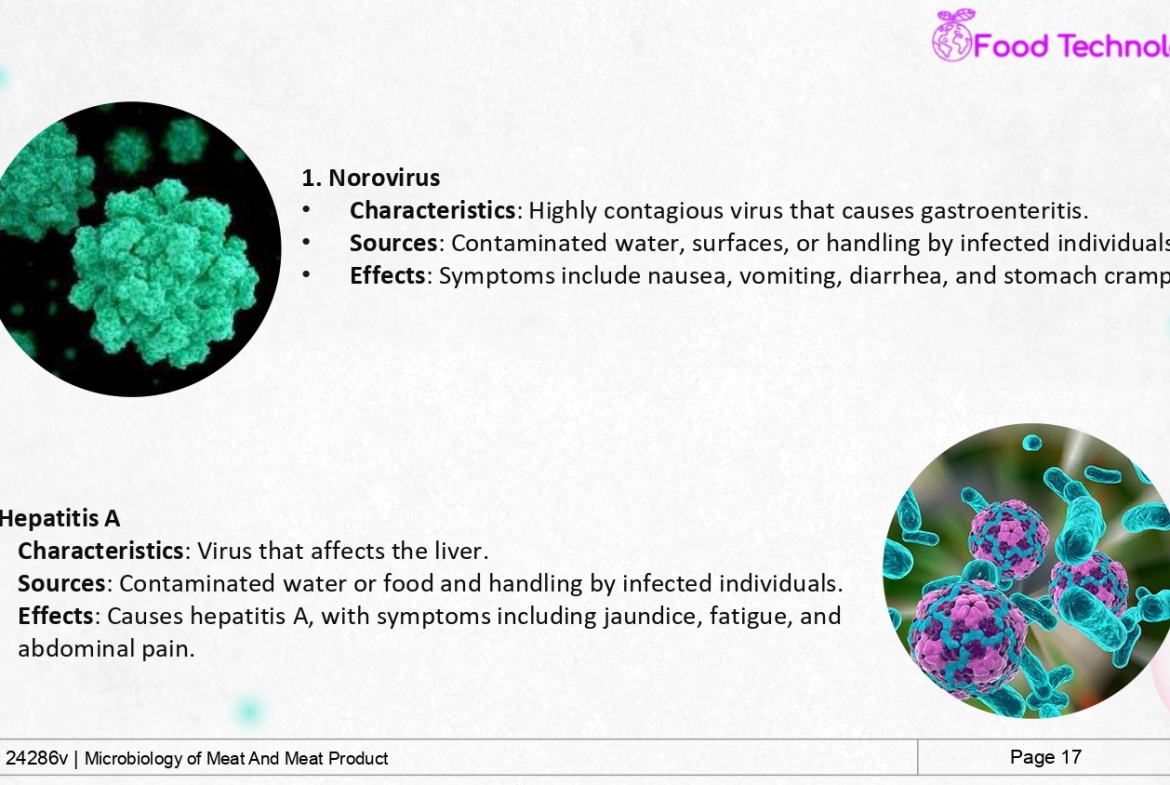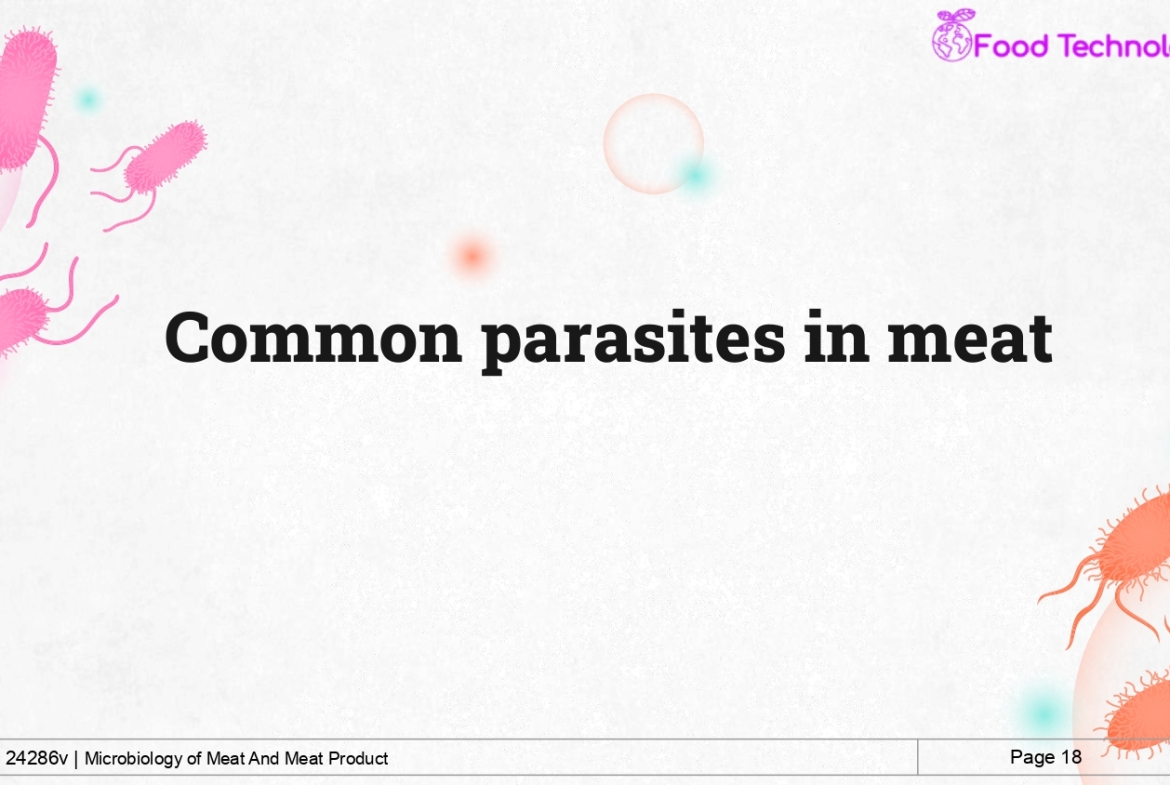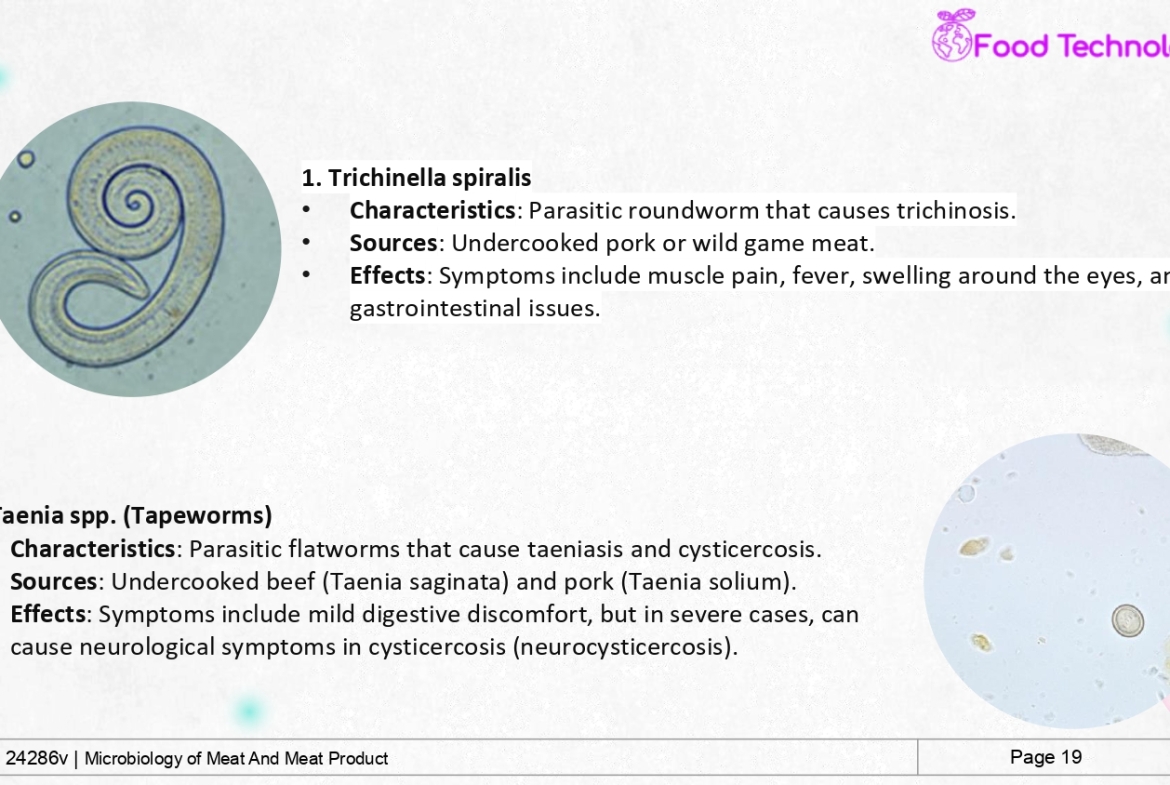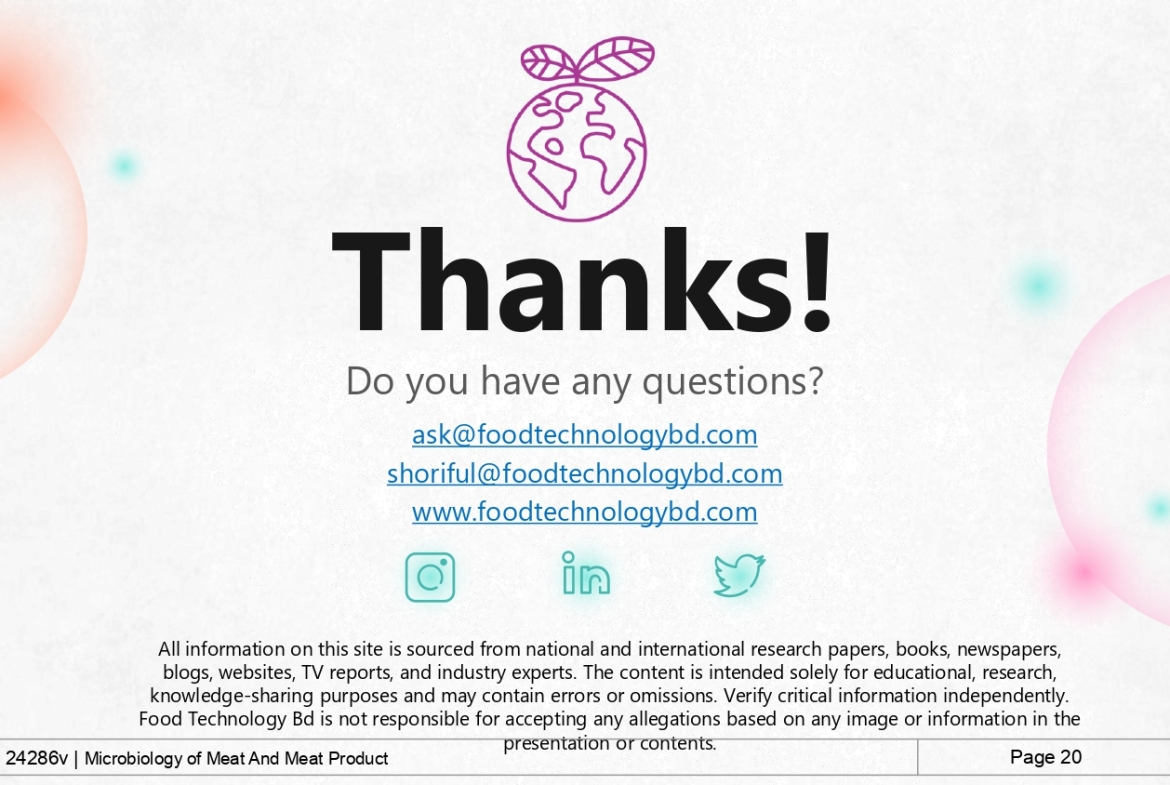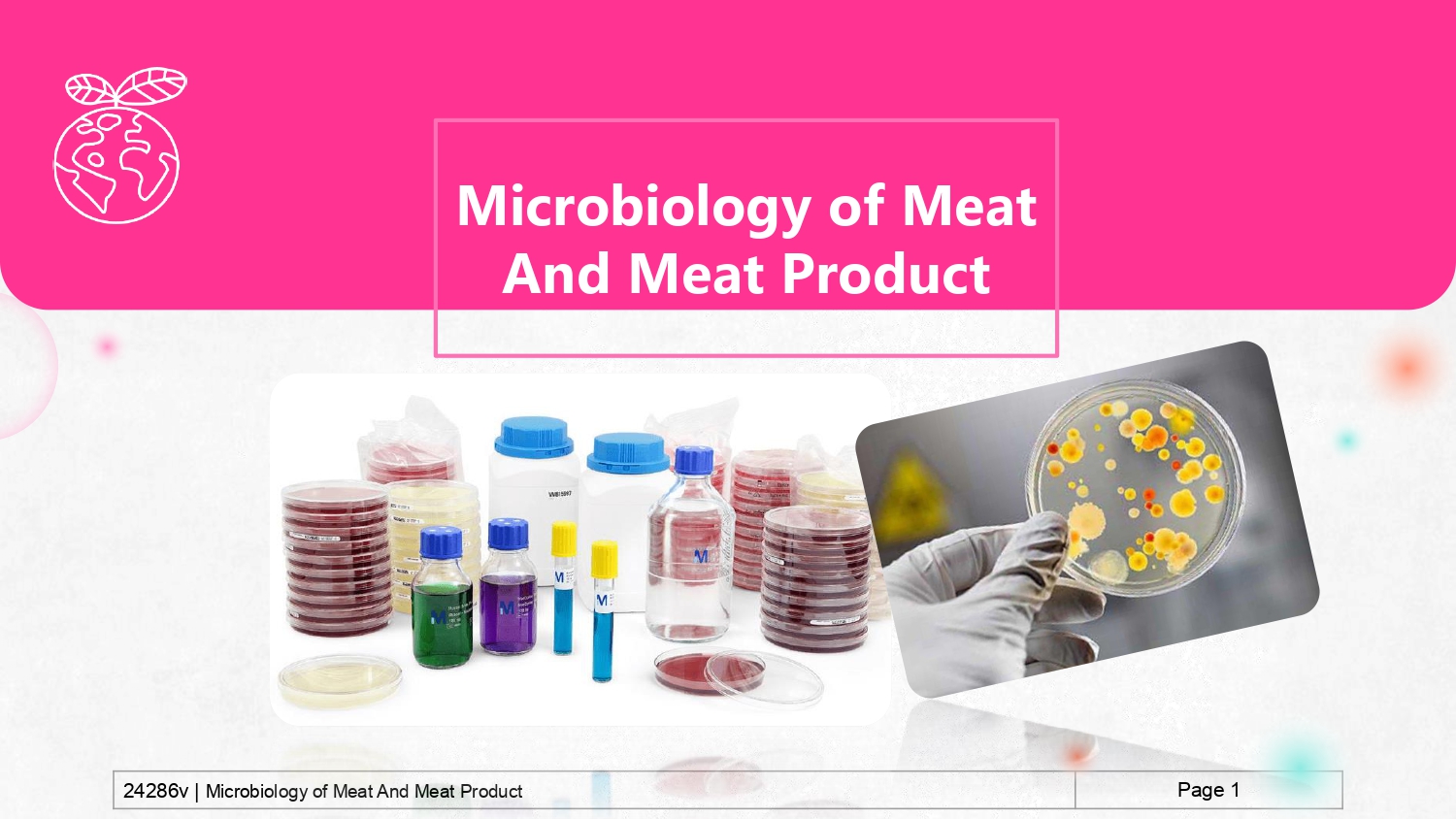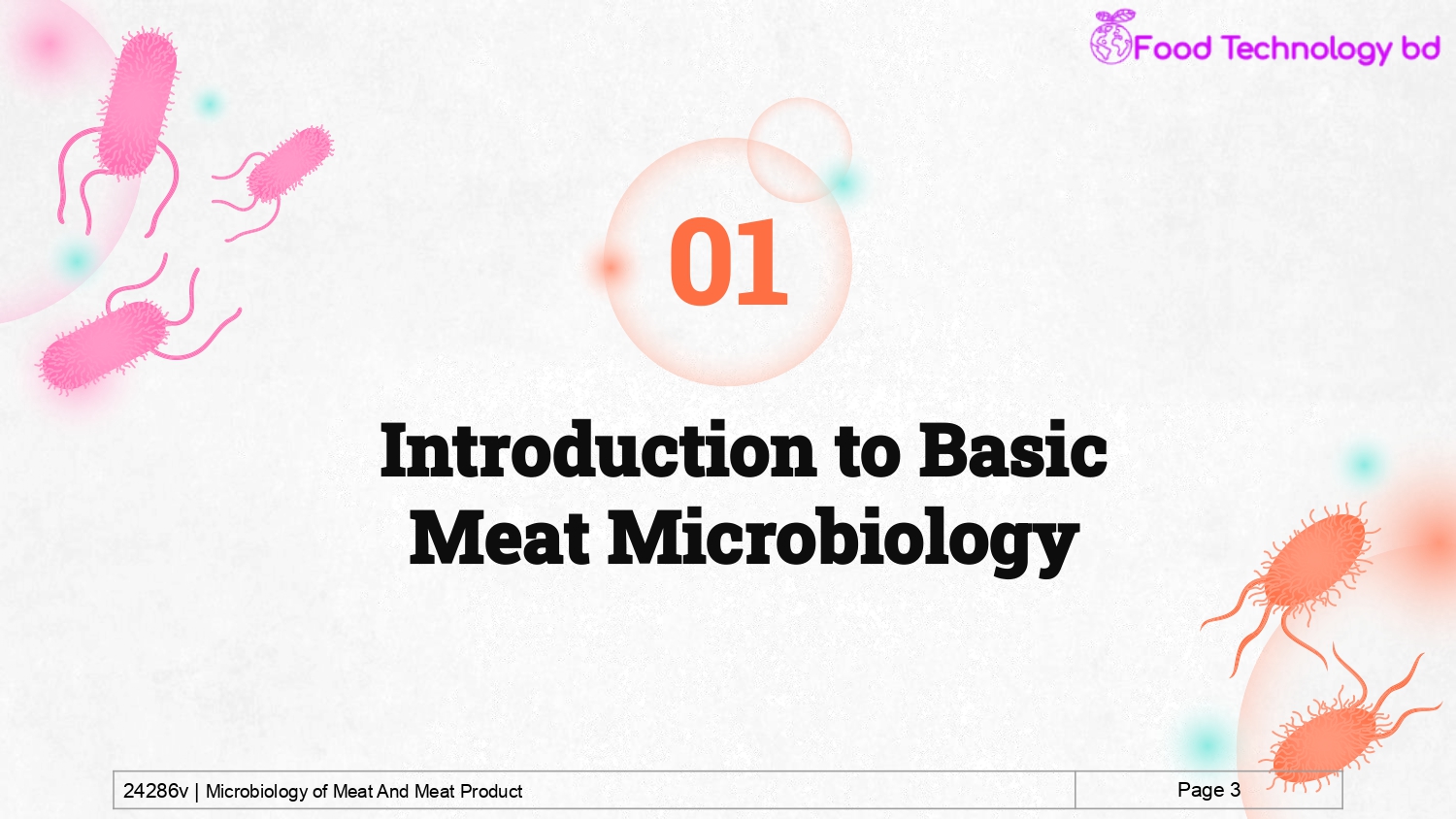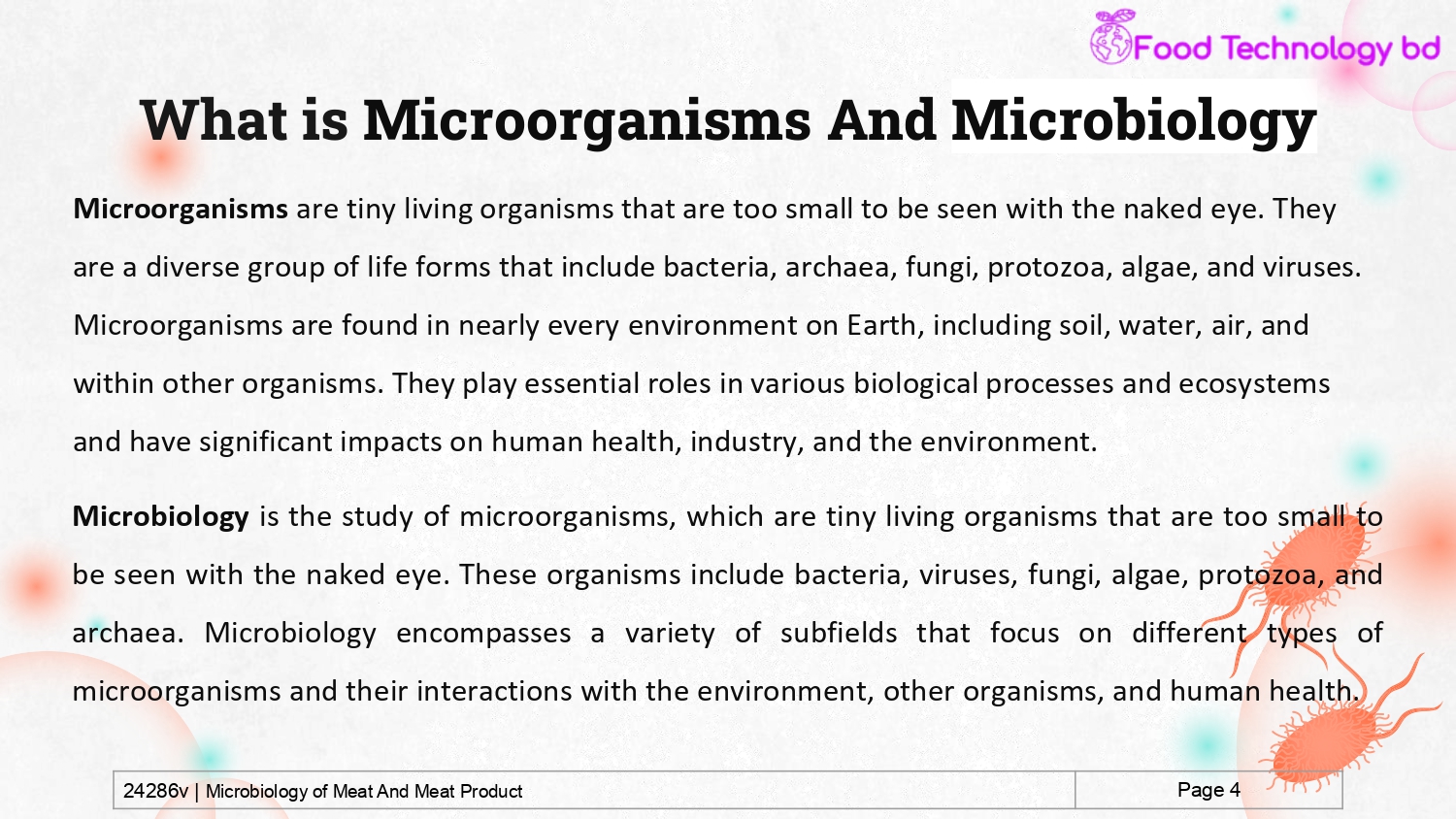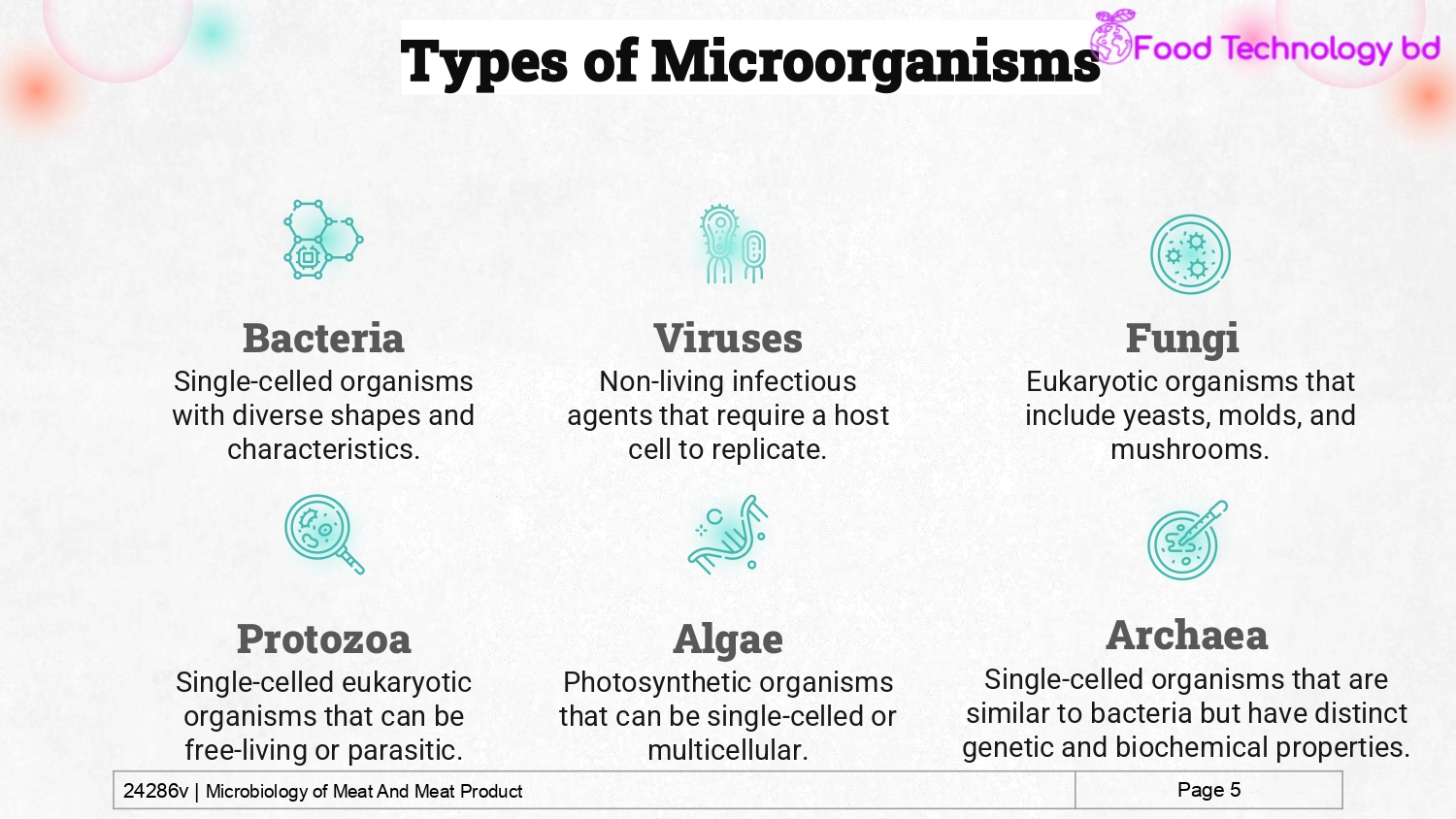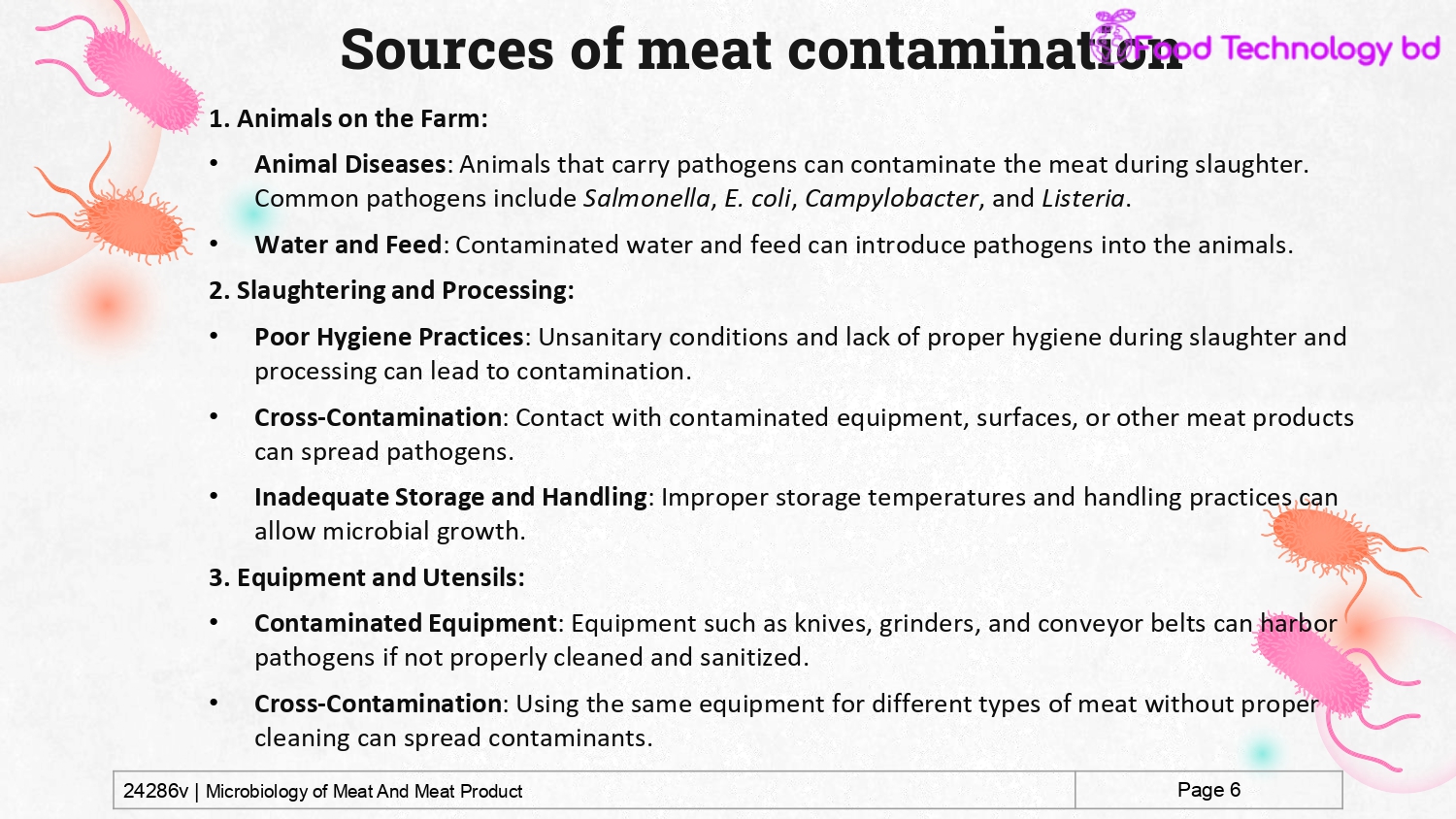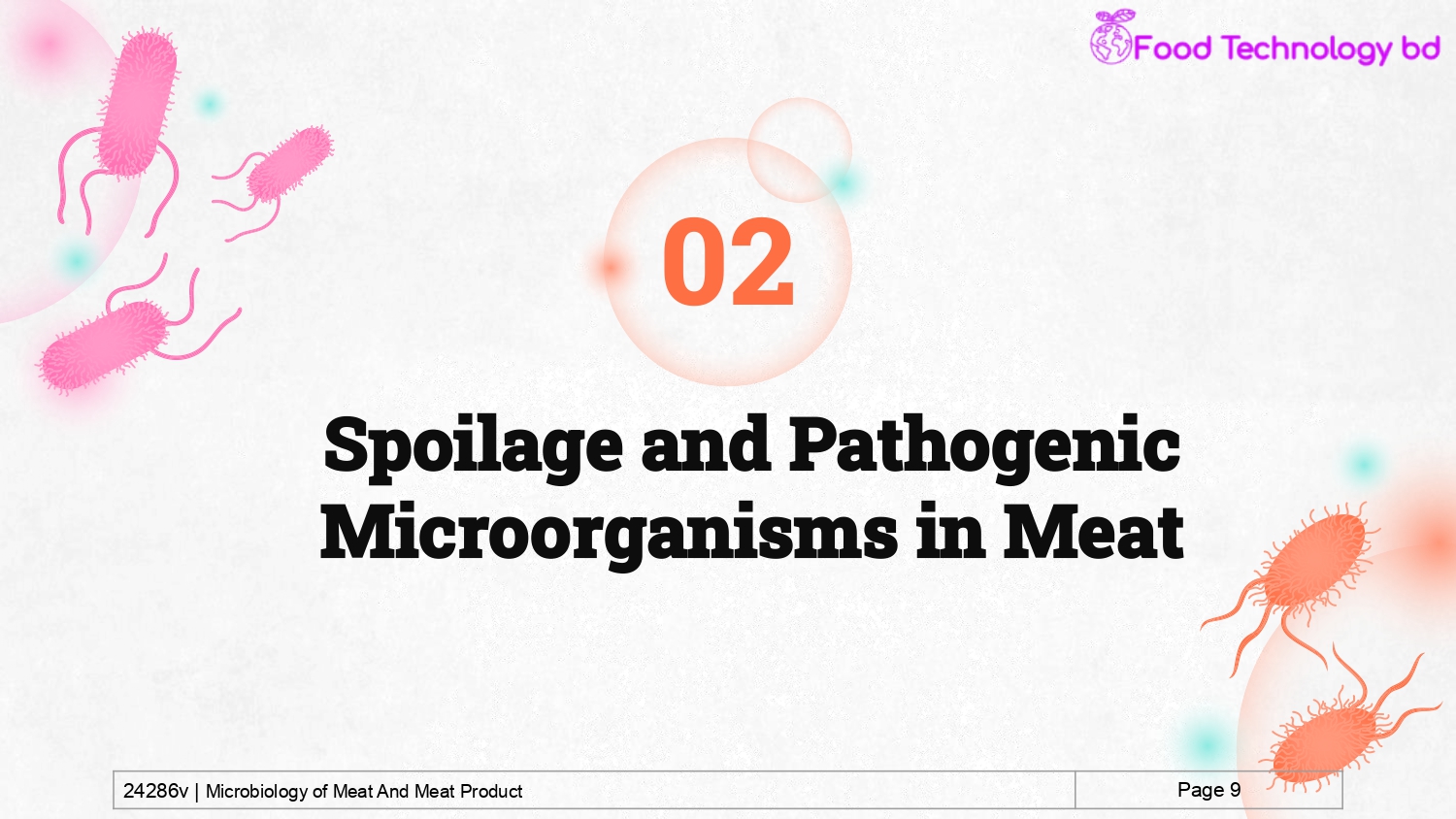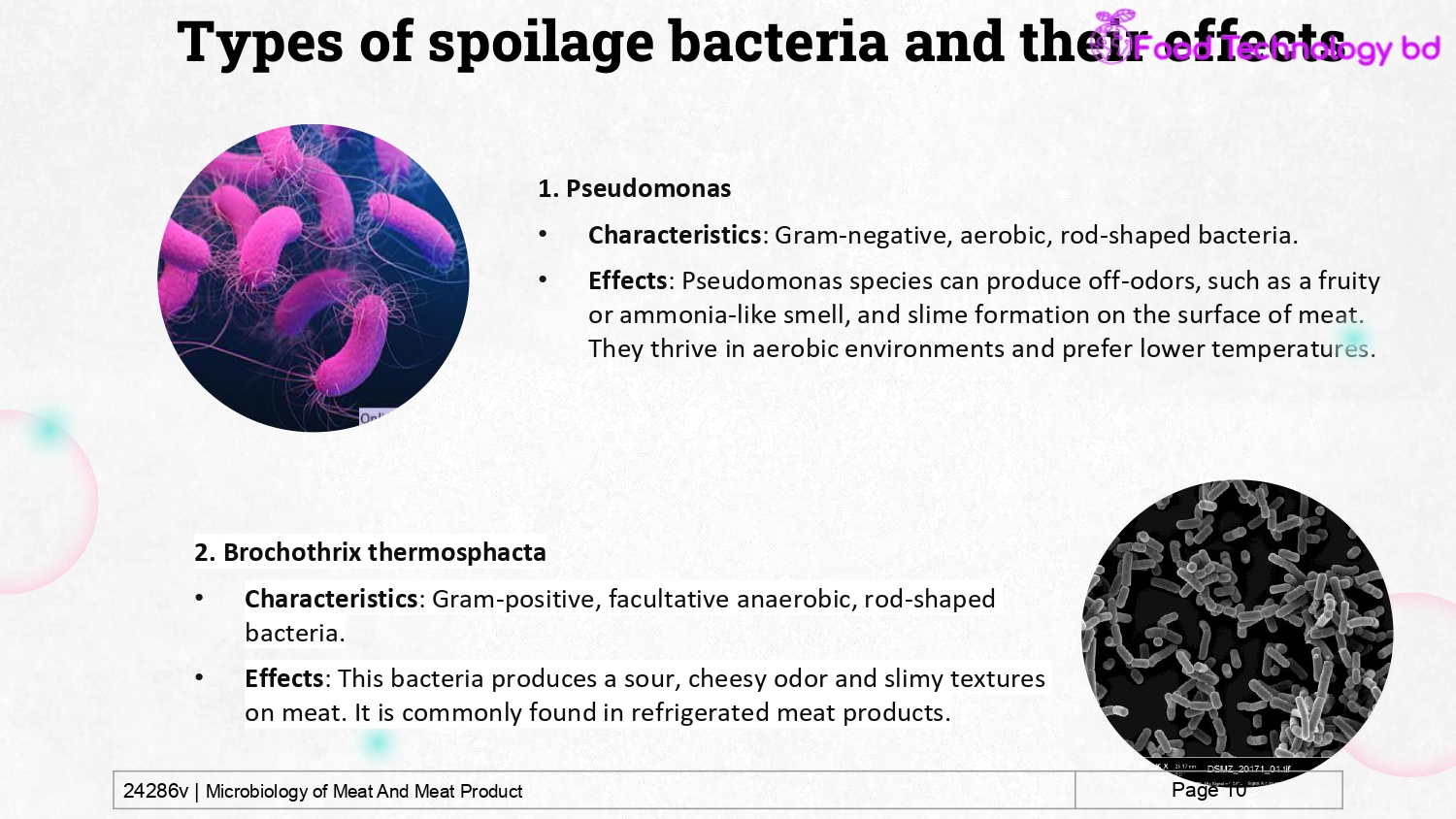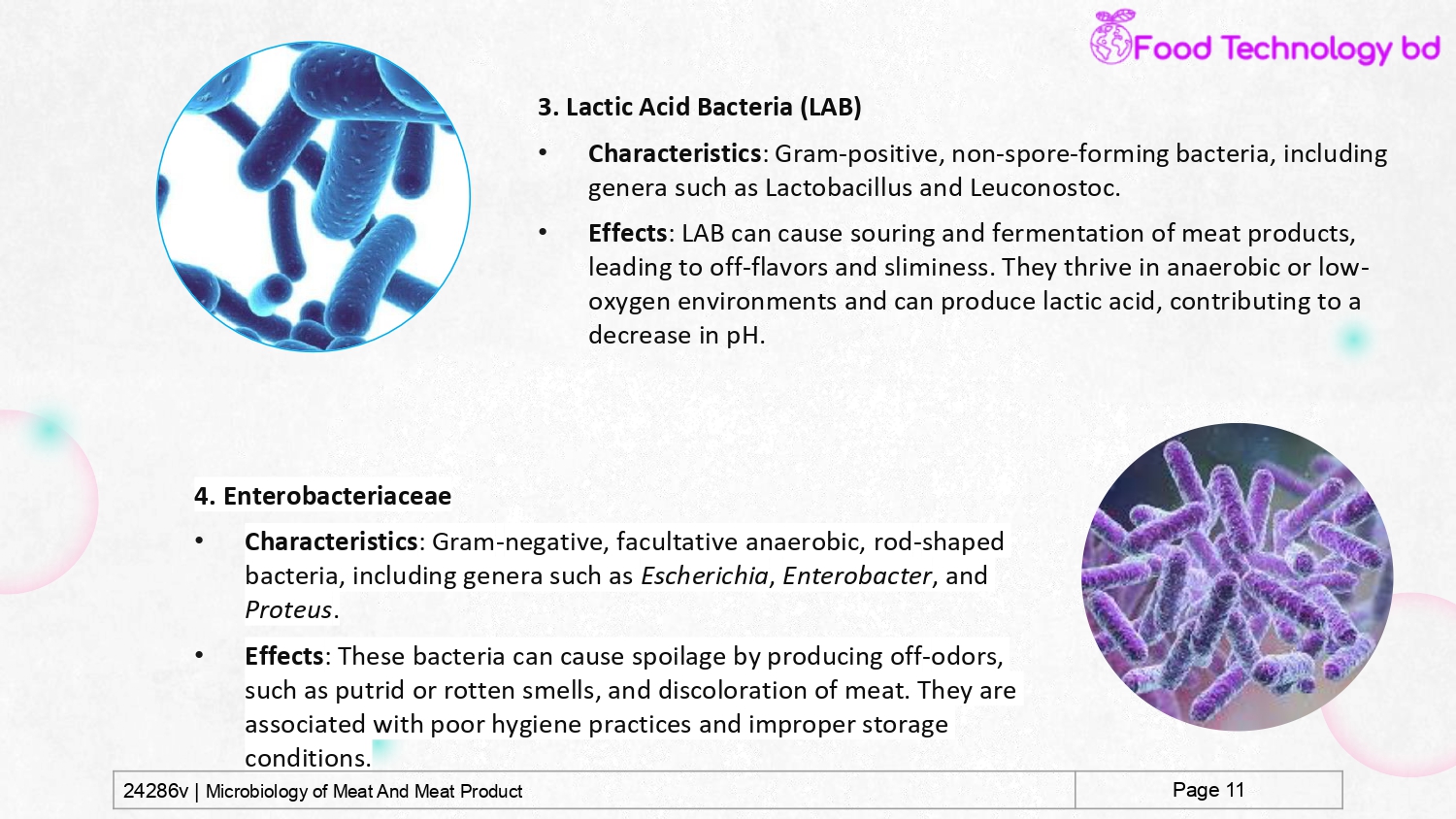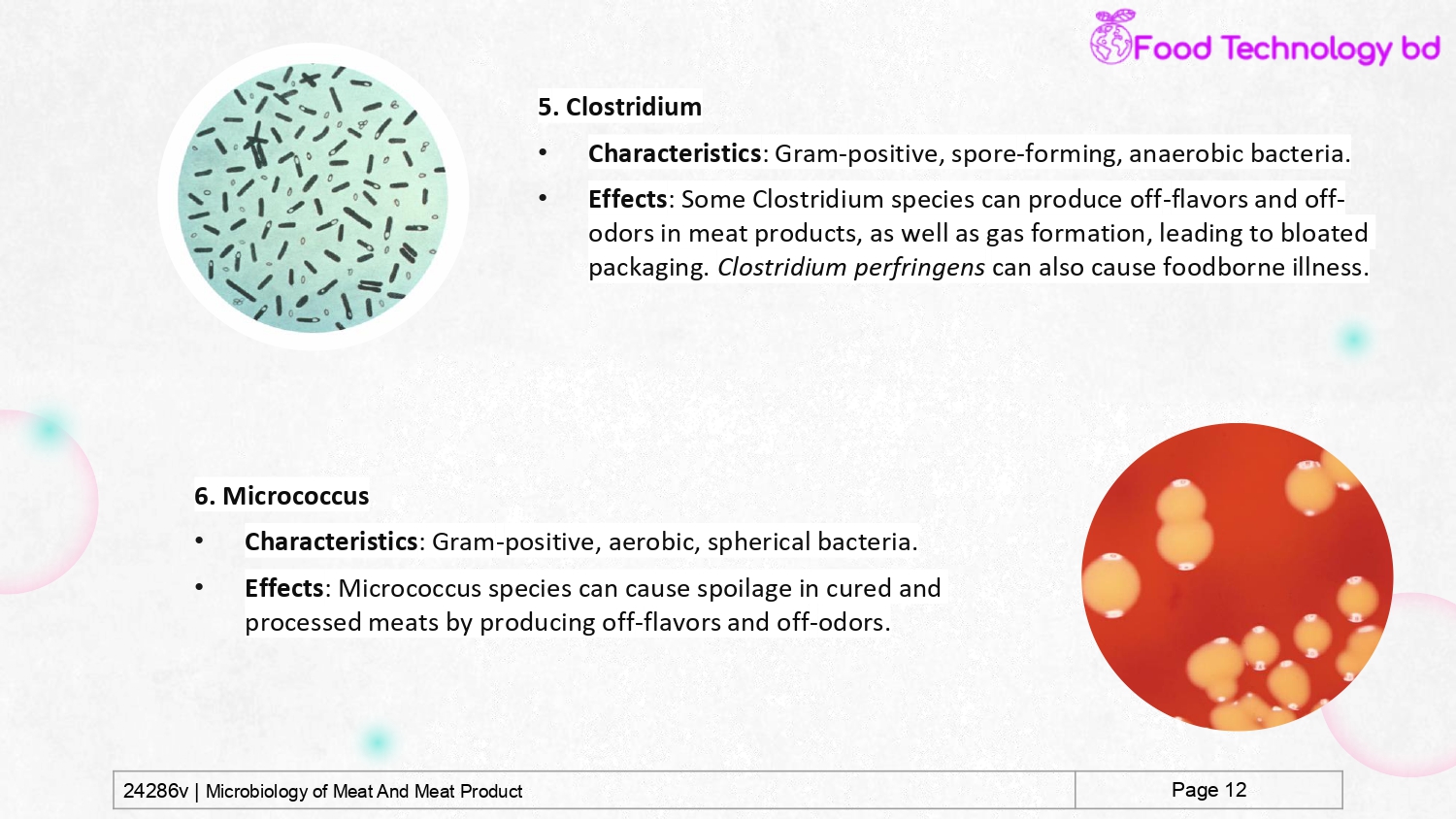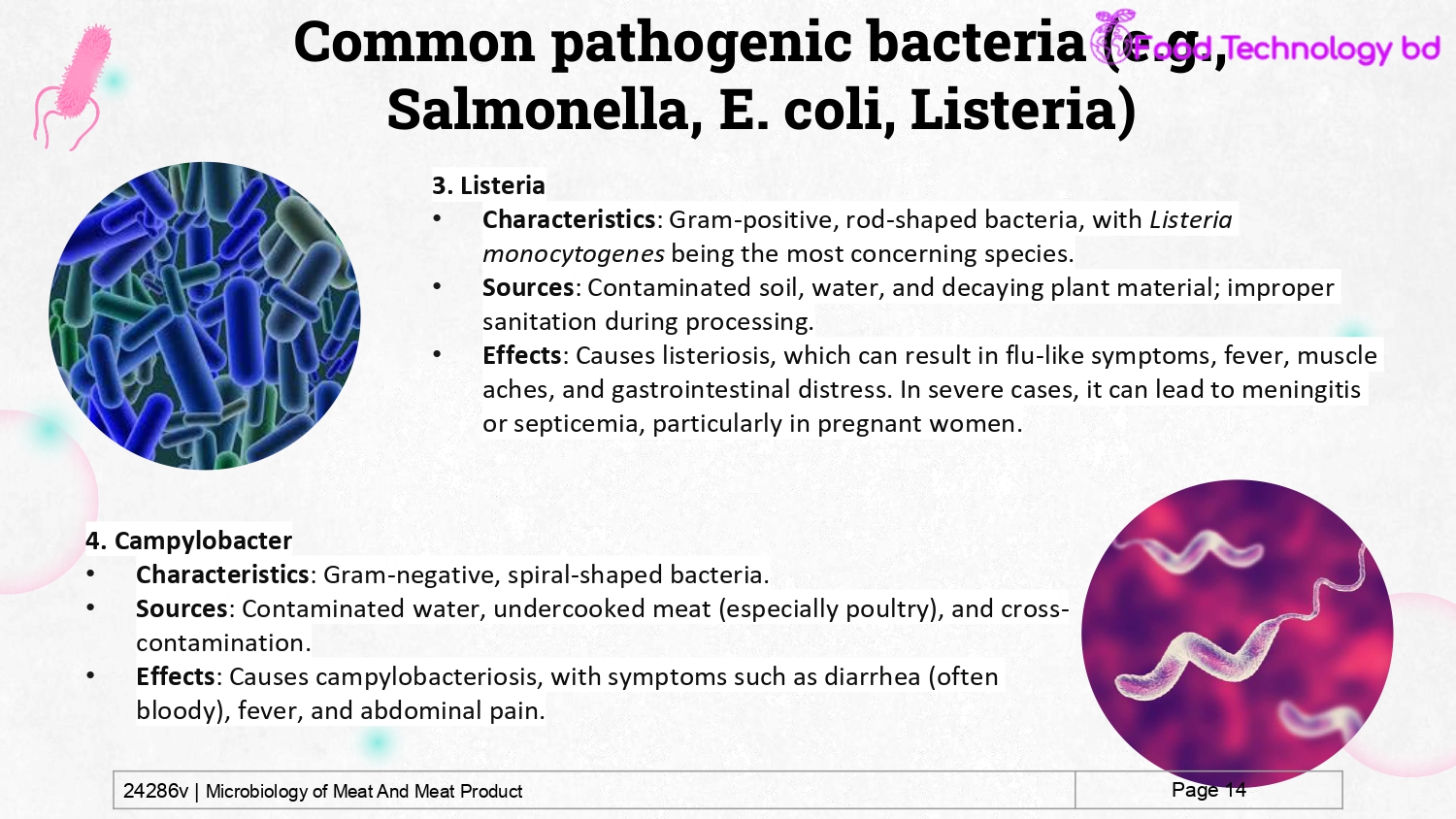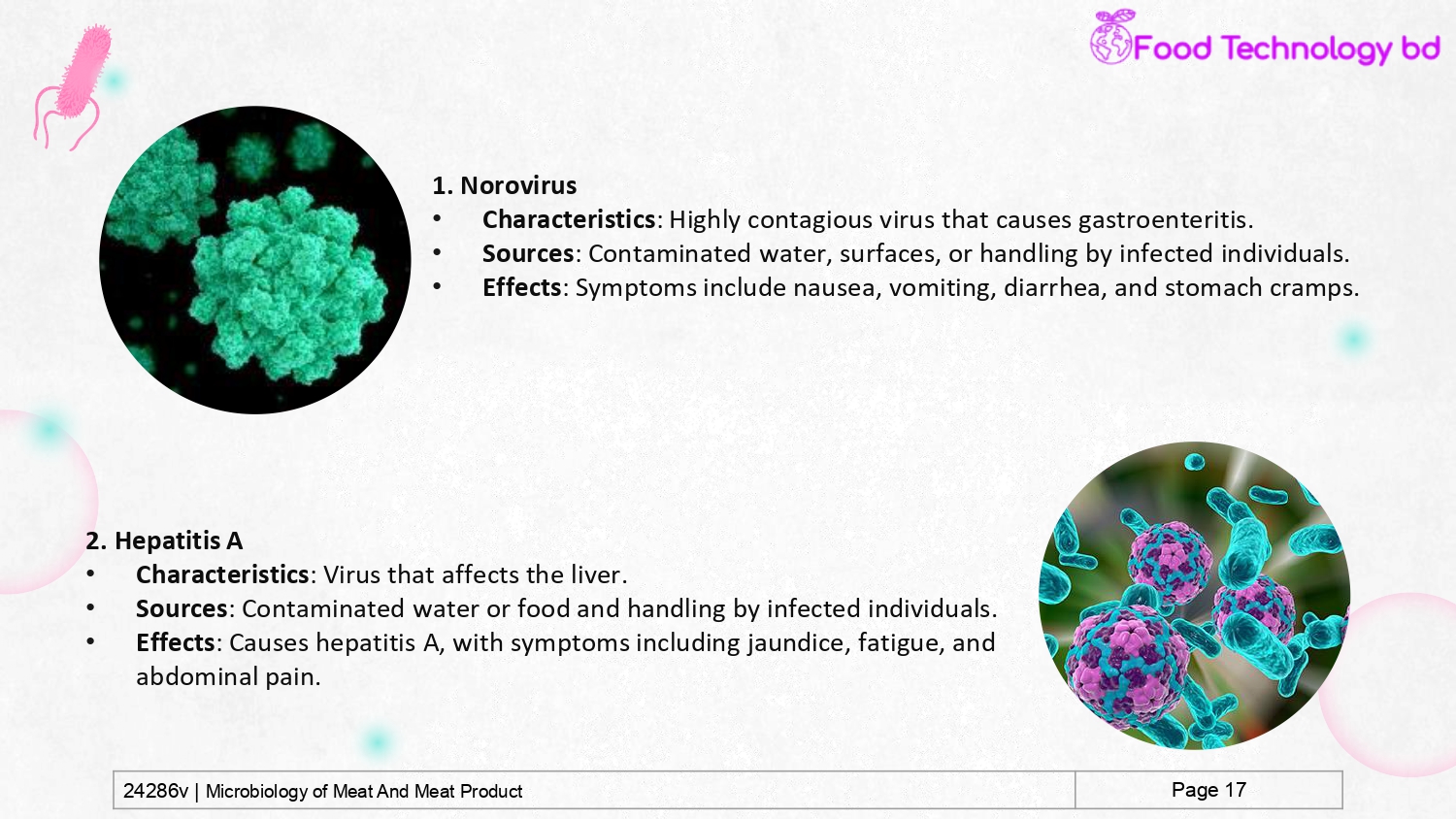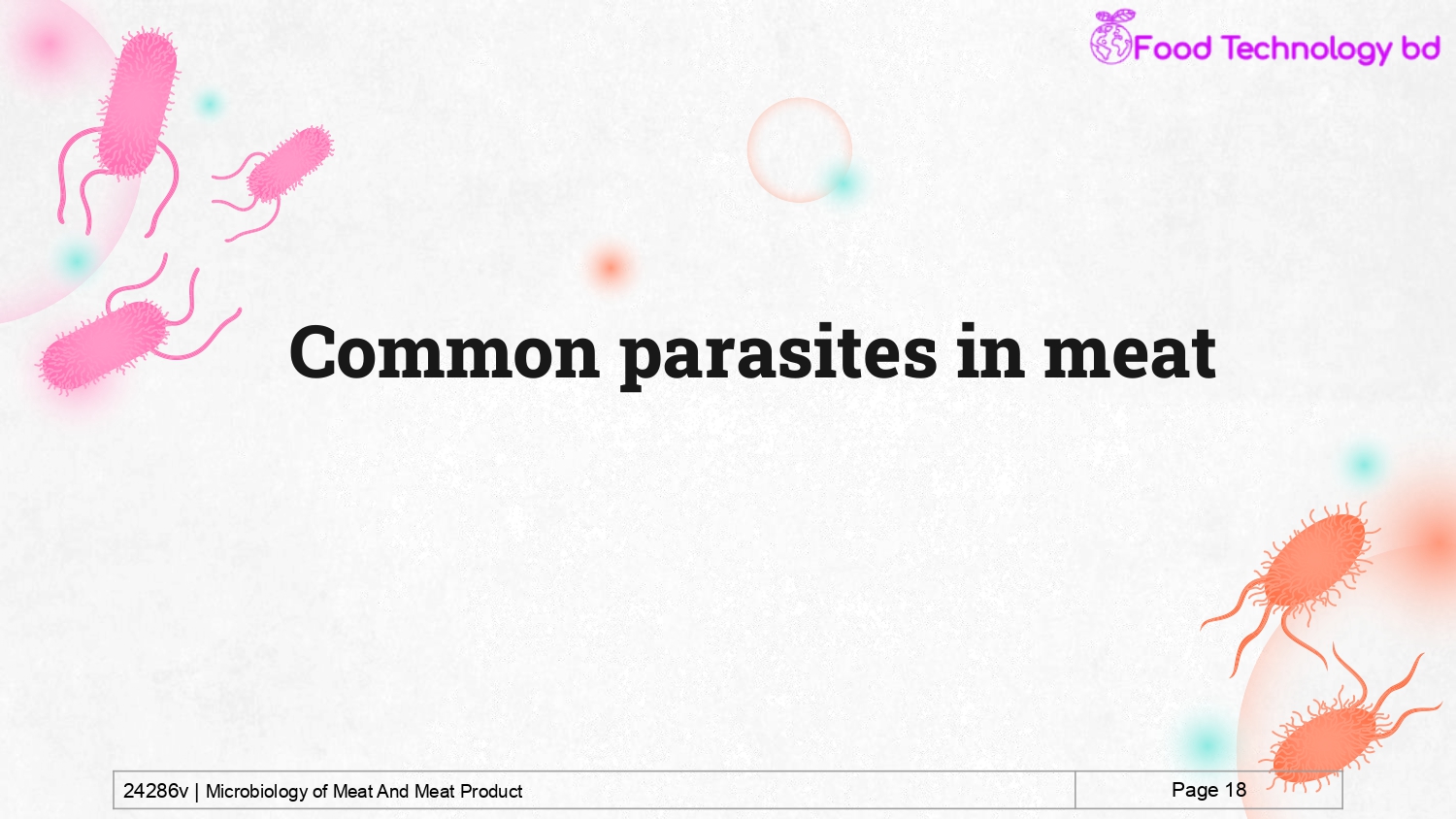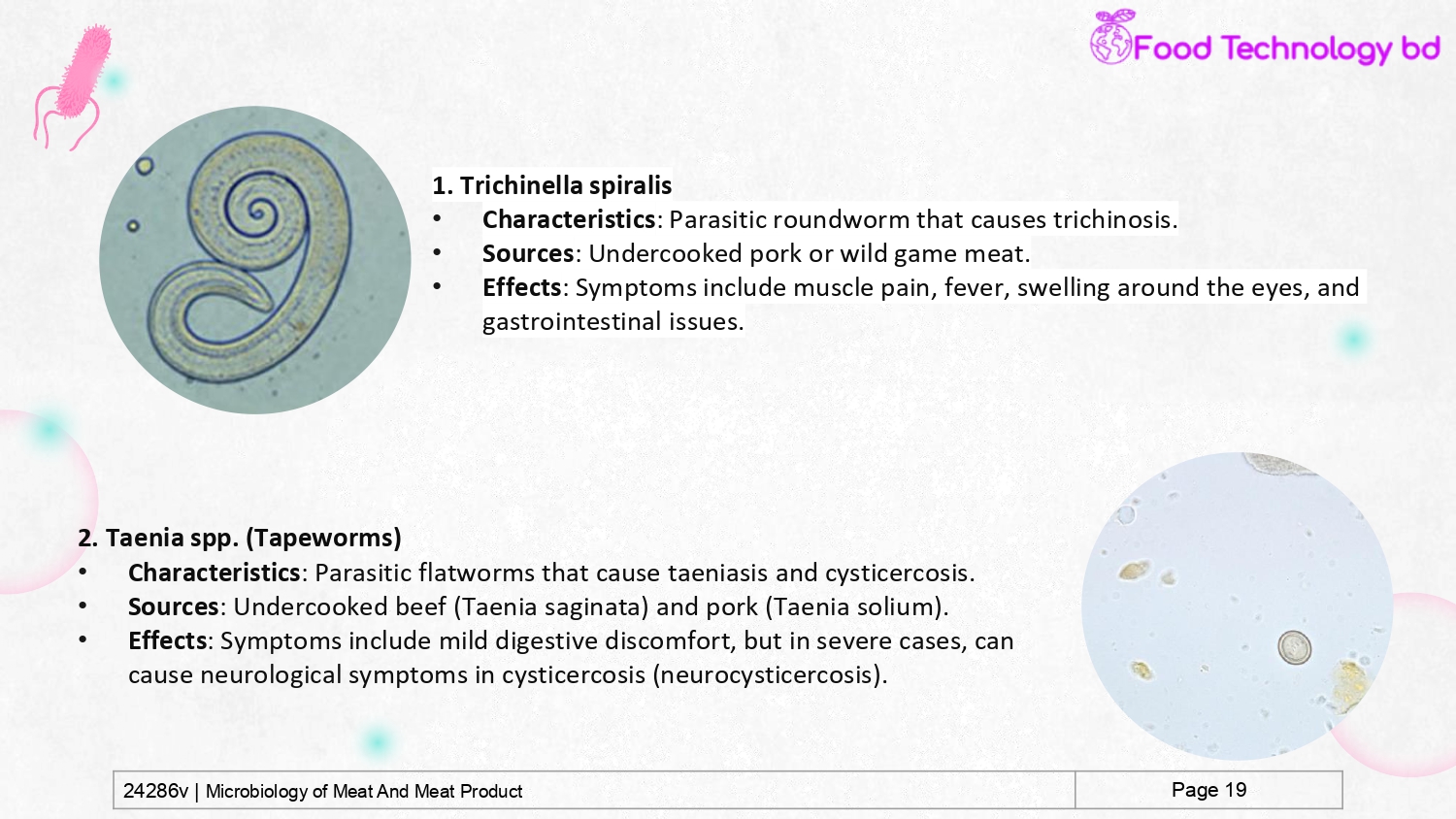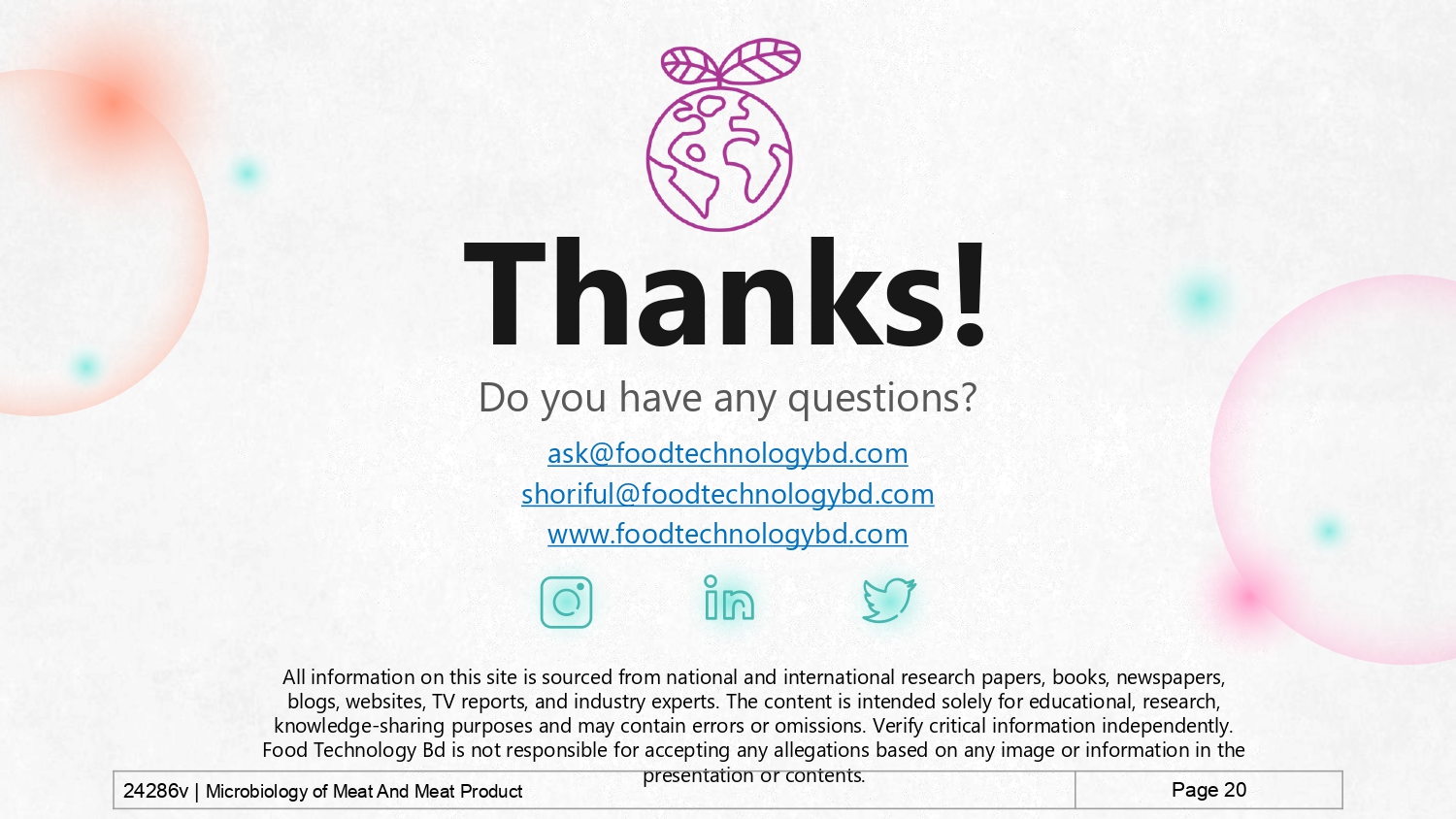Description
Contents of this Presentation
Part 1: Introduction to Basic Meat Microbiology
❖ What is Microorganisms And Microbiology
❖ Type of Microorganisms in meat
❖ Sources of meat contamination
Part 2: Spoilage and Pathogenic Microorganisms in Meat
❖ Types of spoilage bacteria and their effects
❖ Common pathogenic bacteria (e.g., Salmonella, E. coli, Listeria)
❖ Common Viruses in meat
❖ Common parasites in meat
Introduction to Basic Meat Microbiology
Microorganisms are tiny living organisms that are too small to be seen with the naked eye. They
are a diverse group of life forms that include bacteria, archaea, fungi, protozoa, algae, and viruses.
Microorganisms are found in nearly every environment on Earth, including soil, water, air, and
within other organisms. They play essential roles in various biological processes and ecosystems
and have significant impacts on human health, industry, and the environment.
Microbiology is the study of microorganisms, which are tiny living organisms that are too small to
be seen with the naked eye. These organisms include bacteria, viruses, fungi, algae, protozoa, and
archaea. Microbiology encompasses a variety of subfields that focus on different types of
microorganisms and their interactions with the environment, other organisms, and human health.
Types of Microorganisms
- Bacteria: Single-celled organisms with diverse shapes and characteristics.
- Viruses: Non-living infectious agents that require a host cell to replicate.
- Fungi: Eukaryotic organisms that include yeasts, molds, and mushrooms.
- Protozoa: Single-celled eukaryotic organisms that can be free-living or parasitic.
- Algae: Photosynthetic organisms that can be single-celled or multicellular.
- Archaea: Single-celled organisms that are similar to bacteria but have distinct genetic and biochemical properties.
Sources of meat contamination
- Animals on the Farm:
- Animal Diseases: Animals that carry pathogens can contaminate the meat during slaughter. Common pathogens include Salmonella, E. coli, Campylobacter, and Listeria.
- Water and Feed: Contaminated water and feed can introduce pathogens into the animals.
- Slaughtering and Processing:
- Poor Hygiene Practices: Unsanitary conditions and lack of proper hygiene during slaughter and processing can lead to contamination.
- Cross-Contamination: Contact with contaminated equipment, surfaces, or other meat products can spread pathogens.
- Inadequate Storage and Handling: Improper storage temperatures and handling practices can allow microbial growth.
- Equipment and Utensils:
- Contaminated Equipment: Equipment such as knives, grinders, and conveyor belts can harbor pathogens if not properly cleaned and sanitized.
- Cross-Contamination: Using the same equipment for different types of meat without proper cleaning can spread contaminants.
- Human Handling:
- Poor Personal Hygiene: Workers who do not practice good personal hygiene can introduce pathogens to the meat.
- Illness: Sick workers can transfer pathogens to the meat through coughing, sneezing, or handling.
- Packaging and Storage:
- Contaminated Packaging Materials: Packaging materials that are contaminated can introduce pathogens to the meat.
- Improper Storage: Storing meat at inappropriate temperatures can promote the growth of spoilage bacteria and pathogens.
- Transportation and Distribution:
- Inadequate Transport Conditions: Transportation vehicles that are not properly cleaned or maintained can contaminate meat products.
- Temperature Fluctuations: Variations in temperature during transportation can allow microbial growth.
- Retail and Consumer Handling:
- Cross-Contamination: In retail settings, meat can be contaminated by other foods or surfaces that harbor pathogens.
- Improper Handling and Cooking: Consumers can introduce contamination through improper storage, handling, and cooking practices.
- Environmental Factors:
- Water and Soil: Contaminated water or soil used in meat processing can introduce pathogens.
- Airborne Contaminants: Dust, mold spores, and other airborne particles can contaminate meat during processing and storage.
Check the Download For full PDF Document.

